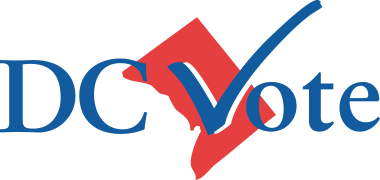
Washington, June 3 – As the District’s Democrats head to the polls in two weeks, RespectAbility is releasing its Washington, D.C., Disability Voter Guide.
There are 68,830 people with a disability living in Washington, D.C., 40,200 of whom are of working age (between the ages of 21 and 64). There are an additional 4,800 people ages 16-20 with disabilities, many of whom are hoping to enter the workforce. The District’s voters are looking to know where the candidates stand on important disability issues in order to increase opportunities for competitive, integrated employment for people with disabilities.
The #PwDsVote 2016 Campaign Questionnaire was designed for people with disabilities (PwDs) and those who love them to know where candidates stand on the issues. The questionnaire asked all of the presidential candidates on both sides of the aisle to comment on 16 disability questions. Former Sec. of State Hillary Clinton and Sen. Bernie Sanders responded by addressing all of the questions. They each have significantly different views on the issues.
Despite numerous requests in person and by phone and email, presumptive Republican nominee Donald Trump has not yet filled out the questionnaire. However, several Republican candidates who have since dropped out of the race did respond to the questionnaire including former Gov. Jeb Bush, who addressed all of the questions, and Dr. Ben Carson, Gov. Chris Christie and Gov. John Kasich, all of whom filled out parts of the questionnaire.
RespectAbility is nonpartisan and does not endorse candidates. The questionnaire is purely for educational purposes as voters go to the polls.
Fully one-out-of-five voters have a disability, and 52 percent of likely voters have a loved one with a disability. Only 34 percent of working-age Americans with disabilities have jobs, despite the fact that the vast majority want to work. More than 11 million working age people with disabilities are now living on government benefits in our country.
RespectAbility President Jennifer Laszlo Mizrahi said, “Our community is looking for jobs so we can achieve the American dream, just like anyone else. It is vital for us to know where the candidates stand economic, stigma, education, safety, transportation, housing, healthcare, foreign affairs and other issues. The candidates have hugely different ideas about how to deal with the issues. Thus, it’s extremely important to read their full answers so you can understand their vast differences.”
Washington, D.C., when compared to the rest of the 50 states, has the tenth lowest percentage of employed people of disabilities (30.3 percent), compared with 75.5 percent of people without disabilities. View the rankings of all 50 states and compare.
Washington, D.C., already has several Project SEARCH worksites established, which help prepare young adults with disabilities for full employment. Given that this program has a 70 percent success rate in placing individuals in full-time employment, more chapters being established throughout the district would be beneficial. The District also is looking to expand the opportunities for apprenticeships and on the job training. These can be extremely successful for people with disabilities looking for work.
Attitudinal barriers such as low expectations and misconceptions are critical obstacle to employment for people with disabilities, especially D.C. A Princeton study shows that while people with disabilities are seen as warm, they are not seen as competent. Similarly, a study published by Cornell Hospitality Quarterly found that companies share a concern that people with disabilities cannot adequately do the work required of their employees.
Washington, D.C., still has a lot of ground to cover in regards to getting more people with disabilities employed. Currently, the difference in employment between people with and without disabilities stands at 45.2 percent, the third lowest when compared to the rates of all 50 states. This lack of employment for people with disabilities creates poverty, powerlessness and poor health. Polls and studies show that people with disabilities want the opportunity to have the dignity and independence that jobs provide.
America has 1.2 million youth with disabilities, between the ages of 16 and 20. Each year 300,000 of them age into what should be the workforce, but stigmas and lack of knowledge about the capabilities of people with disabilities means that most do not find employers willing to hire them. Young adults with disabilities in all of these states are hoping to find work. They have high expectations and deserve the opportunity to achieve the American dream. Young people with disabilities may simply need some thoughtful help to transition into the workforce.See data on all 50 states here: State Data.
RespectAbility will continue to urge Trump to submit his ideas for the disability community. When he does so, we will update the guide. The questionnaire is being distributed to more than 50,000 people who care about disability issues, more than ten thousand of whom live in the early primary states and the heads of more than 100 national disability organizations, many of whom will share with their own lists. RespectAbility also has placed online ads sharing the questionnaire.






Be First to Comment